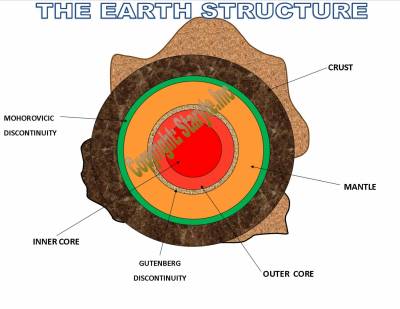| Home » Articles » LESSON NOTES (Social Studies) » High School level |
|
The shape of the earth is flattened sphere; it is silinatical with an egg.
WHY EARTH IS FLATTENED SPHERE?
· The diameter through the equator and poles varies. The diameters are 12713 km. · The influence of winds from High Pressure to low pressure erodes the poles materials and deposit on the equator. · Earth’s movement which are rotation and Revolution.
POINT TO PROOF THAT THE EARTH IS SPHERE
· When a ship rises from a distance, smoke is seen first, as it comes nearer the most is seen then the whole ship is seen. · Rise and set of the sun, the sun does not rise and set at the same time in all countries of the world. · The shadow of the earth appears on the moon when the earth is between the sun and the moon. · Telescoping observation reveals that all heavenly bodies viewed from any angle shows circular outlines all heavenly bodies are sphere. · Photographs taken from spaceship at every high altitude clearly show that the earth has spherical shape.
The earth divided into two main structure which are
i. The outer Structure
ii. The inner Structure
THE OUTER STRUCTURE
The outer structure comprising of the following:-
1. The atmosphere, this is made up of pure air with nitrogen 78%, Oxygen 21%, Carbon Dioxide 0.03% and other gases in very small amount it is also formed by small particles like Dust, ash, smoke and water vapor.
2. Hydrosphere, this refers to the water of the earth, example Ocean, Lakes, Rivers, Seas, Swamps which are water bodies of the outer earth occupies about 3/4 (75%) of the earth’s surface.
3. The biosphere , This refers to the earth’s organisms that includes all living organisms of the earth’s surface such as animals, plants and bacteria
THE INNER STRUCTURE:
The inner structure covers the interior of the earth, it consists of three concentric layers that are:-
i. Crust
ii. Mantle
iii. Core
1. CRUST (LITHOSPHERE)
This is the outer layer of the earth, it is also known as lithosphere, it is from 0 to 64 km thick and it consists of two layers that are Sial & Sima. The upper layer of the crust is Sial and it composed at granite rocks that form Continents while the lower layer is called Sima also known as Basaltie Continental Blocks and forms the ocean floor.
Sial contains Silicon & Aluminium while Sima contains Silicon and Magnesium
Examples of the rocks found on this layer are igneous rocks, Sedimentary rocks and land from the mountain, Plateau, plains and valley basin.
Its density is about 2.7g/cm3 for Sial and 2.9 g/cm3 for Sima.
The boundary between the crust and the next layer which is Mantle is called the Mohorovičić discontinuity or the Moho for short.
2. MANTLE (MESOSPHERE)
· This is the second layer of the earth, it is also known as mesosphere, · It lies between the core and the crust. · It is denser than the core · Its density is 3.8g/cm3 · Its diameter is 2900 km · Igneous rocks which contains Iron and Magnesium · It is separated from the crust by the boundary known as Mohorovicic discontinuity or the Moho for short.
3. THE CORE (BARY-SPHERE) This is the inner most layer of the earth, in this layer materials are in molten state (liquid), it is very high density and comprise mainly of Nickel and Iron, there is high pressure and iron, in this layer the temperature is estimated to be 3700°C.
The boundary between the core and the mantle is called Gutenberg Discontinuity.
Thanks for your reading.. Get ready for the next topic and feel free to leave comments and questions.
| |
| Views: 2630 | |
| Total comments: 0 | |
